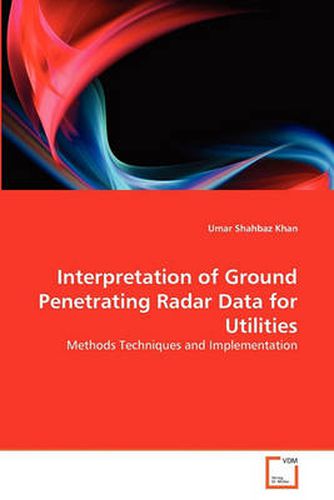Readings Newsletter
Become a Readings Member to make your shopping experience even easier.
Sign in or sign up for free!
You’re not far away from qualifying for FREE standard shipping within Australia
You’ve qualified for FREE standard shipping within Australia
The cart is loading…






This title is printed to order. This book may have been self-published. If so, we cannot guarantee the quality of the content. In the main most books will have gone through the editing process however some may not. We therefore suggest that you be aware of this before ordering this book. If in doubt check either the author or publisher’s details as we are unable to accept any returns unless they are faulty. Please contact us if you have any questions.
A Ground Penetrating Radar (GPR) survey for subsurface investigation yields a large amount of data; within this data only a small percentage represent the actual targets of interest. The current GPR data processing for underground utilities relies on skilled operators and involves many computationally expensive and time consuming processing stages before any information about the subsurface is concluded. These results are often based on broad assumptions and involve human intervention, which is a source of inconsistency and error, hence rendering the results to be unreliable. The data processing stages involve pre-processing of the data followed by detecting the areas that contain the targets and extracting the target signature after which a final interpretation of the target parameters is made. This book automates the data processing stages as well as suggests improvements in existing tools and techniques to make them more efficient and robust. New data processing tools have been developed which are superior to existing methods in terms of performance and require less computational cost and time to produce results.
$9.00 standard shipping within Australia
FREE standard shipping within Australia for orders over $100.00
Express & International shipping calculated at checkout
This title is printed to order. This book may have been self-published. If so, we cannot guarantee the quality of the content. In the main most books will have gone through the editing process however some may not. We therefore suggest that you be aware of this before ordering this book. If in doubt check either the author or publisher’s details as we are unable to accept any returns unless they are faulty. Please contact us if you have any questions.
A Ground Penetrating Radar (GPR) survey for subsurface investigation yields a large amount of data; within this data only a small percentage represent the actual targets of interest. The current GPR data processing for underground utilities relies on skilled operators and involves many computationally expensive and time consuming processing stages before any information about the subsurface is concluded. These results are often based on broad assumptions and involve human intervention, which is a source of inconsistency and error, hence rendering the results to be unreliable. The data processing stages involve pre-processing of the data followed by detecting the areas that contain the targets and extracting the target signature after which a final interpretation of the target parameters is made. This book automates the data processing stages as well as suggests improvements in existing tools and techniques to make them more efficient and robust. New data processing tools have been developed which are superior to existing methods in terms of performance and require less computational cost and time to produce results.